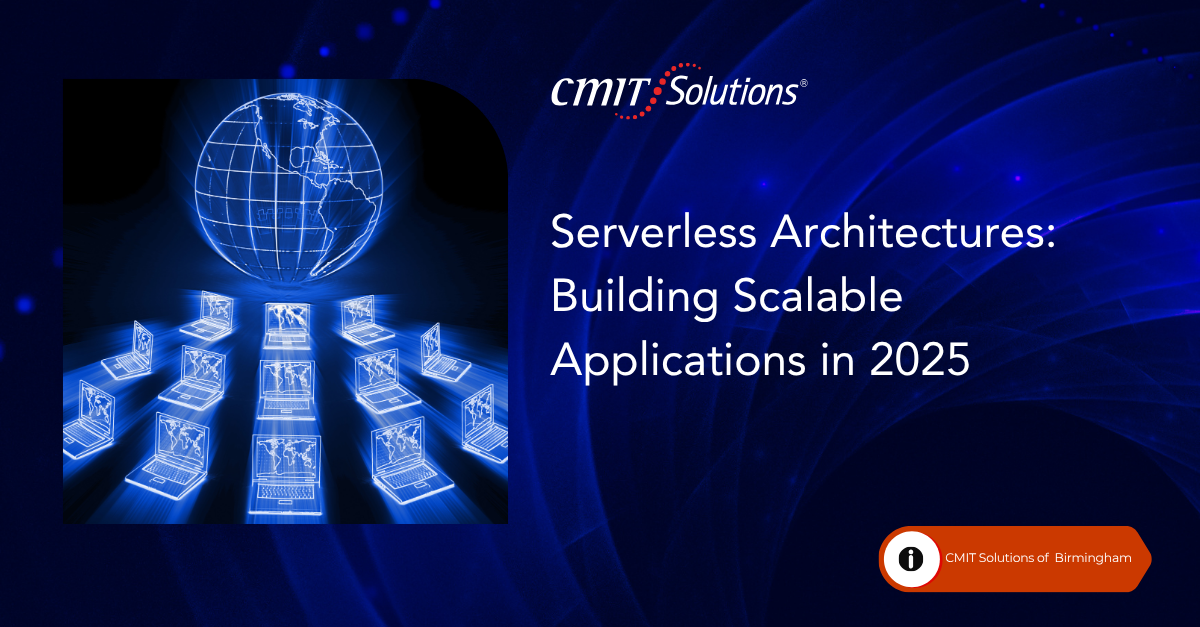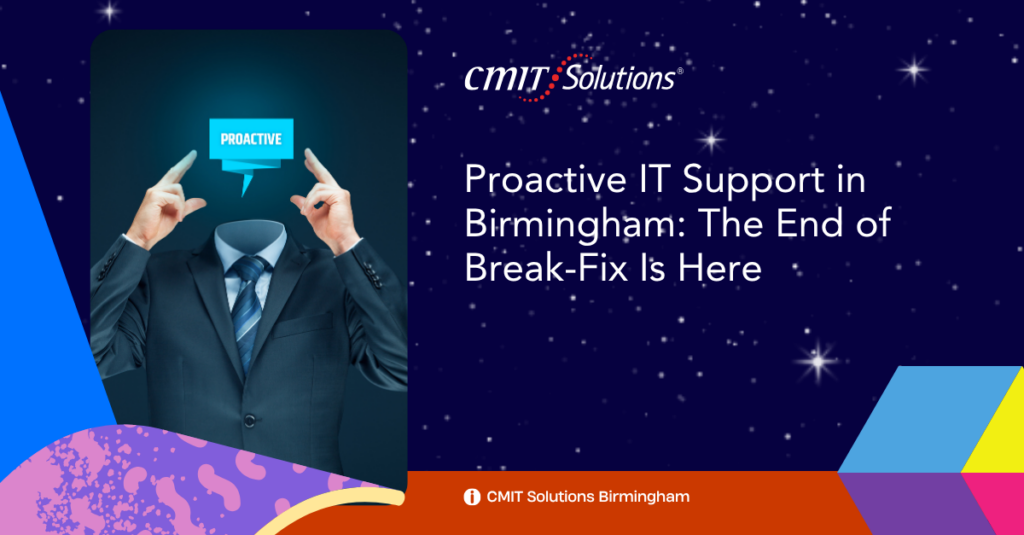Introduction: The Serverless Revolution in 2025
In 2025, serverless architectures are fundamentally transforming how businesses in Birmingham approach application development, scalability, and cost efficiency. No longer just a buzzword, serverless has matured into a mainstream deployment model for agile companies, especially small and medium-sized businesses. As cyber threats rise and business agility becomes non‑negotiable, embracing a serverless approach isn’t just a technical decision—it’s a strategic imperative that touches every layer of the modern tech stack.
What Is Serverless Architecture?
Serverless computing allows developers to build and run applications without provisioning or managing physical or virtual servers. Functions‑as‑a‑Service (FaaS) platforms such as AWS Lambda, Azure Functions, and Google Cloud Functions execute discrete blocks of code in response to events, scale automatically, and bill only for the milliseconds of compute consumed. By abstracting away infrastructure, serverless empowers Birmingham’s SMBs to focus on innovation while trusted providers handle capacity, patching, and runtime management. This shift is already reshaping IT consulting strategies across the region.
Core Benefits of Serverless for Birmingham SMBs
Serverless architectures deliver four game‑changing advantages for growth‑minded companies:
- Automatic scalability ensures that workloads effortlessly absorb traffic spikes—vital for seasonal retailers or event‑driven service firms in Birmingham.
- Radical cost efficiency eliminates idle capacity and transforms CapEx into finely tuned OpEx, aligning perfectly with smart tech buying strategies.
- Operational freedom frees internal teams from patching and capacity planning so they can pursue revenue‑generating projects and leverage proactive IT support rather than firefighting.
- Accelerated time‑to‑market empowers developers to deploy new features in hours, not weeks—an edge that can make the difference in Birmingham’s competitive SMB landscape.
Serverless vs. Traditional Infrastructure: A Cost & Scalability Perspective
Traditional architectures rely on pre‑allocated virtual machines, fixed storage, and static networking appliances. Capacity must be over‑provisioned to handle peak load, locking businesses into high baseline costs and creating operational drag.
By contrast, serverless adopts a consumption‑based model where each invocation is billed in sub‑second increments. The financial benefit is dramatic: companies only pay for what they use, and they avoid the sunk costs of idle servers. Meanwhile, latency‑sensitive workloads no longer require manual autoscaling because the underlying fabric expands automatically, leveraging next‑gen network management capabilities to maintain performance.
Integrating Serverless into Hybrid Cloud Strategies
Most Birmingham businesses operate a blend of on‑premises resources, private clouds, and public cloud services. Serverless functions can act as event‑driven glue across these environments—processing messages from IoT devices on‑prem, transforming data streams in transit, or triggering workflows that span multiple clouds.
Companies crafting a scalable hybrid‑cloud strategy use serverless to modernize legacy systems incrementally. For example, a manufacturing firm might keep its ERP database on‑premises while using FaaS to expose RESTful APIs to suppliers, unlocking new collaboration models without a forklift migration.
Securing Serverless Applications with Zero Trust and Automated Compliance
While serverless abstracts servers, it does not abstract security responsibilities. Each function still needs strict identity controls, encrypted communications, and limited access permissions. Adopting a zero-trust framework ensures continuous verification at every stage, which is crucial when multiple microservices interact across hybrid cloud environments. Birmingham SMBs, particularly those handling sensitive customer data or operating in regulated industries, are recognizing zero trust as a necessary baseline rather than an advanced option.
The decentralized nature of serverless workflows introduces new security considerations, including function sprawl, insecure third-party APIs, and elevated risk of privilege escalation. Security tools built for serverless ecosystems must monitor event triggers, scan deployment packages, and offer granular logging. Without these safeguards, even a small misconfiguration could leave critical systems vulnerable. This is why Birmingham businesses increasingly view security as a shared responsibility—one that requires vigilance from both developers and managed service providers.
Compliance automation complements zero trust by embedding guardrails into development workflows. Leading platforms now support policy-as-code, allowing organizations to encode regulatory rules directly into CI/CD pipelines. Local firms are leveraging automated compliance tools that generate audit-ready logs in real time and reduce the friction of annual assessments. This shift enables faster innovation without compromising data protection or governance standards.
Resilience and Disaster Recovery with Serverless‑Driven Backups
Downtime can be catastrophic for customer trust and revenue. By embedding serverless functions in a data‑protection pipeline, organizations trigger near‑real‑time replication to multi‑region object stores, automate integrity checks, and orchestrate swift restores.
A recent shift toward modern backup strategies shows how recovery time objectives (RTOs) once measured in days are now compressed to minutes. The pay‑per‑use model further slashes storage overhead, ensuring that resilience does not inflate budgets.
Empowering Productivity and Communication through Serverless‑Powered Tools
Serverless backends fuel a new generation of AI‑enhanced productivity apps that process email, transcribe meetings, and automate repetitive tasks. These tools utilize cloud-based event triggers to react in real time, delivering seamless experiences across devices and platforms. As detailed in AI in Your Inbox, Birmingham businesses are leveraging these apps to streamline operations, reduce response times, and increase employee output without increasing administrative burden.
Beyond productivity, serverless is revolutionizing how businesses communicate. The rapid adoption of Unified Communications-as-a-Service (UCaaS) has highlighted the need for flexible, scalable platforms that support voice, video, messaging, and file sharing under one umbrella. Serverless functions enhance UCaaS platforms by managing backend logic like call recording, AI-driven analytics, and cross-platform synchronization, ensuring that remote and hybrid teams stay aligned.
Strategic Adoption: Procurement, Consulting, and Tailored MSP Packages
Transitioning to serverless is not merely a technical migration—it is a strategic transformation. Forward‑thinking leaders engage trusted advisors to map workloads, predict cost curves, and establish observability baselines. Working with local experts in IT consulting ensures that financial models align with growth targets and that architecture decisions remain future‑proof.
When it comes to execution, businesses can leverage tailored MSP packages that bundle serverless management, cost optimization, and 24×7 monitoring. These offerings integrate learnings from emerging IT trends to keep technology roadmaps aligned with new possibilities as they arise.
Conclusion: Start Small, Scale Big
Serverless isn’t an all‑or‑nothing proposition. Birmingham SMBs can begin with a single event‑driven microservice and evolve toward a fully automated, elastically scaling stack as confidence grows. Partnering with a community‑rooted provider like CMIT Solutions of Birmingham delivers both technical expertise and local accountability. Ready to explore the art of the possible? Visit our digital HQ or contact our team today to architect a serverless future that scales with your ambitions.







